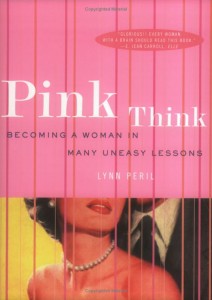As I was sorting through a ginormous pile of papers from classes over the past few years, I came across my lecture/discussion notes for the graduate class on Feminist Pedagogies that I taught on the day that my mother died–September 30, 2009. I feel compelled to post them here today.
First, a set-up. My mom died in the very early morning (I don’t know the exact time) in the living room of her house in Illinois. My dad called me at my home, over 6 hours away in Minnesota, around 8 AM. I taught my graduate class that afternoon, starting at 2 PM. It was an intense class; while I didn’t cry, I do recall at least one other student did. We spent the first half of class discussing what it means to be a “person” in the classroom and the second half of Paulo Freire’s Pedagogy of the Oppressed. I began the class by announcing that my mom had died that morning. Here’s what I wrote down to discuss in relation to that announcement:
Theoretical: What does it mean to be a “Person” in the classroom? What is demanded of us as teachers? How do we represent our vulnerability—when we are in grief, when we are upset, when we are hurt, when we are passionately committed to our ideas?
Fisher encourges us to, “bring our most authentic selves into feminist discourse” and feminist classroom (51). How do we do that?
What sort of space is there/should there be for thinking about teachers as people with feelings, who have experiences that influence their teaching? How do we perform/represent that in the classroom? How does the classroom become a space for the teacher to learn and critically self-reflect—as a fellow classmate instead of “the teacher”?
What sort of resources does/should feminist pedagogy give to the teacher (as a learner, student, member of the class)? How and when should we, as teachers, shift the focus on ourselves—our own care, our own need to be challenged, our own willingness to engage in critical self-reflection?
Rosa Pugueras writes about her belief that “she is the decisive element” in the classroom, that her mood affects her student’s mood, that she has the power to hurt or heal them. Is this true? If so, does the professor have a responsibility to be aware (and make others aware) of their mood? When is this admission a performance that is authentic and that helps to create a dialog (co-intentional education) between the teacher and students and when is it too confessional and merely personal?
Application: Practically speaking, as teachers should we try to “leave our worries at the door” and perform as selves who are lighthearted and upbeat? Or, should we tell them when we are having a bad day? Should we remind them that we are people too? If so, how? Is one more authentic than the other? What are some strategies you can think of for bring our “authentic selves” into the classroom?
I can’t remember what I exactly said about how these questions were so compelling to me on that day. I do remember feeling that I had to teach. Teaching that semester–both feminist pedagogies and my undergrad class, queering theory–was what helped me through those gut-wrenching months of my mom’s dying/death.
These questions of authenticity and navigating the personal and professional/academic have been central to my classes this year. In my 2010 Feminist Pedagogies class, we talked a lot about whether or not social media (twitter, in particular) could help us to access our authentic selves, or at least authentic moments of our selves. And in my queer/ing ethics course this spring, we repeatedly reflected on how to put the personal and academic beside each other. I hope to think even more about these questions of the person in the academy and the personal and the academic this summer.

